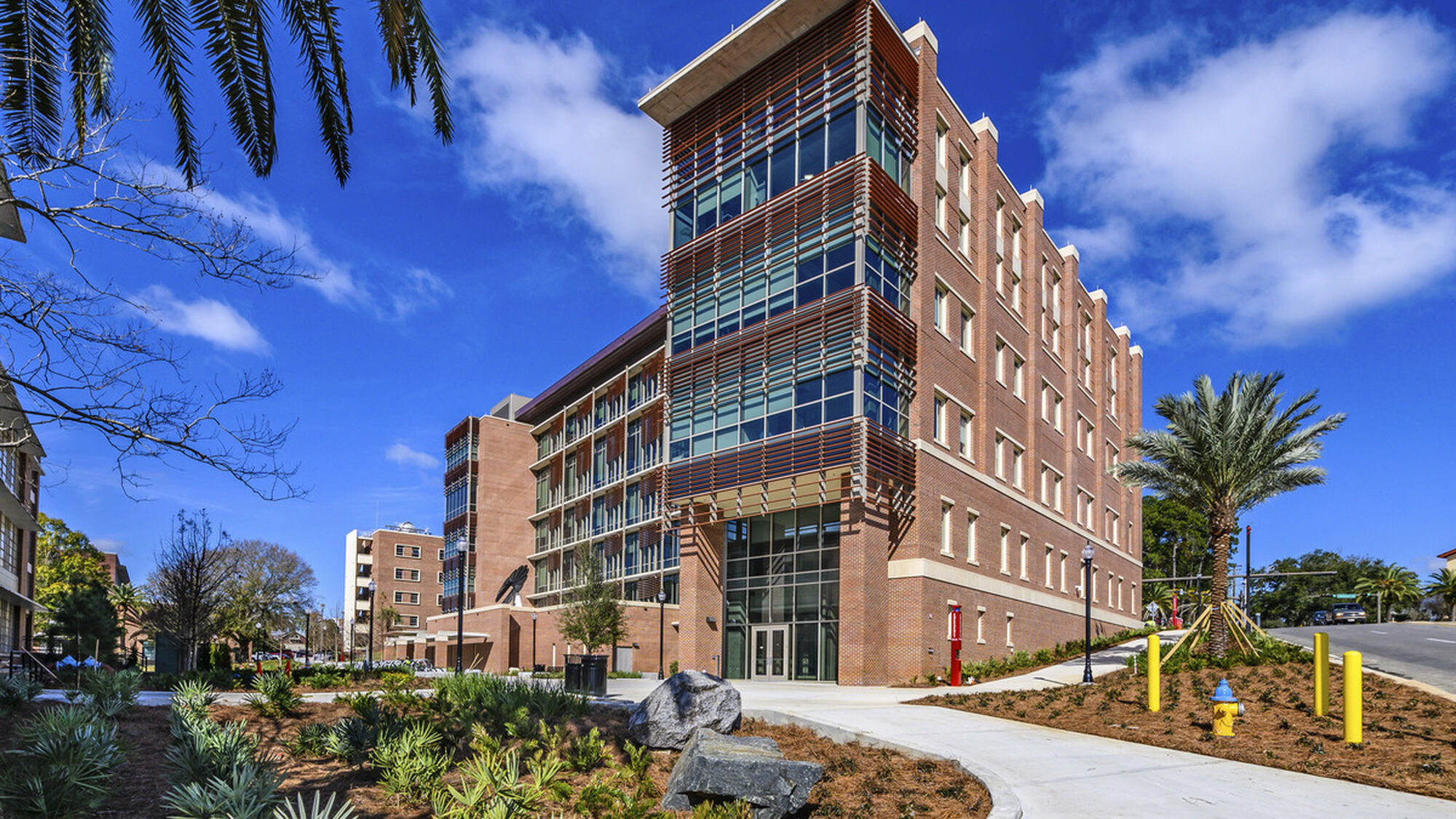
Florida State University
Earth, Ocean, and Atmospheric Sciences Building (EOAS)
Cutting-edge research facility at the forefront of groundbreaking environmental sciences studies.
Florida State University’s Earth, Ocean, and Atmospheric Sciences (FSU EOAS) building introduces over 130,000 square feet of new space for the blossoming EOAS department. With seven stories, this building is the tallest building on Florida State’s campus, with a prominent location but a limited footprint. The new EOAS department — comprised of existing academic programs — leads the prolific field of research and environmental sciences.
AEI completed the MEP/FP and architectural lighting design for this facility – building space that includes department offices, classrooms, teaching labs, research labs, and academic support spaces. FSU’s original plan linked the building with the campus steam system. This plan limited ADA access to the building, interrupted landscape design, and tore down grading around the site. AEI developed an alternate strategy to provide boilers within the building, avoiding the above issues and reducing the building’s overall energy use.

An exterior view of the new, state-of-the-art FSU facility.
“This building will contain modern laboratories that allow research in diverse areas like hurricane prediction, the exploration of Mars and understanding of the global carbon cycle.”
The resultant solution relieved bottlenecks with the campus roadways and pedestrian corridors, minimized energy lost from steam and condensate distribution based on studies AEI conducted at similar campuses around the US, integrating with the campus master plan concept to migrate toward decentralized heating. FSU approved the boiler concept during the final month of the design phase, and AEI swiftly developed a plan to incorporate boilers into the building’s mechanical penthouse in time to adhere to the original design schedule.
Based on experience before AEI’s involvement with the FSU campus, active chilled beams were approached with hesitancy from the owner. AEI worked closely with the architect to ensure that chilled beams were integrated within the architecture after designing robust control strategies and overseeing mitigation of risks during installation and startup. After nearly a year of occupancy, the active chilled beams are performing as intended, saving energy while providing high thermal comfort.

Modern lab spaces feature abundant natural daylighting to optimize overall user experience and enhance productivity.

A look inside the mechanical room.
The building houses students and faculty in environmental science, geology, meteorology, and oceanography disciplines and includes 23 research labs and eight teaching labs, a broadcast studio for meteorology students, a 280-seat auditorium, and a 100-seat active learning classroom.
Several specialized features are prominently displayed in and around the building, such as a state-of-the-art seismometer capable of detecting earthquakes worldwide, a solar flower which harvests enough solar energy to power two houses, and “Science on a Sphere” from NOAA which allows students, faculty, and visitors to visualize global data including atmospheric storms, earthquakes, climate change, and seawater temperatures.
Faculty from across these integrated departments conduct research around the world, including in the Democratic Republic of Congo, the North Pole, Brazil, the South Pacific, and the Gulf of Mexico. Many of these researchers played a vital role in studying how the Deepwater Horizon oil spill affected the rich ecological system of the Gulf. Their deep knowledge and experience in scientific research set the stage for the FSU EOAS facility to host a collaborative environment where they teach, conduct research, and promote public service in environmental sciences. This facility fosters new teaching and research methods in the study of geology, oceanography, and meteorology, and serves as an educational model for other STEM-related projects at FSU.
Sited at the southwest corner of West Tennessee Street and North Woodward Avenue, FSU EOAS is established as a prominent component of the campus’ north gateway, shared by the Oglesby Student Union.

Specialized laboratory spaces foster academic research in a variety of earth, ocean, and atmospheric sciences-related disciplines.